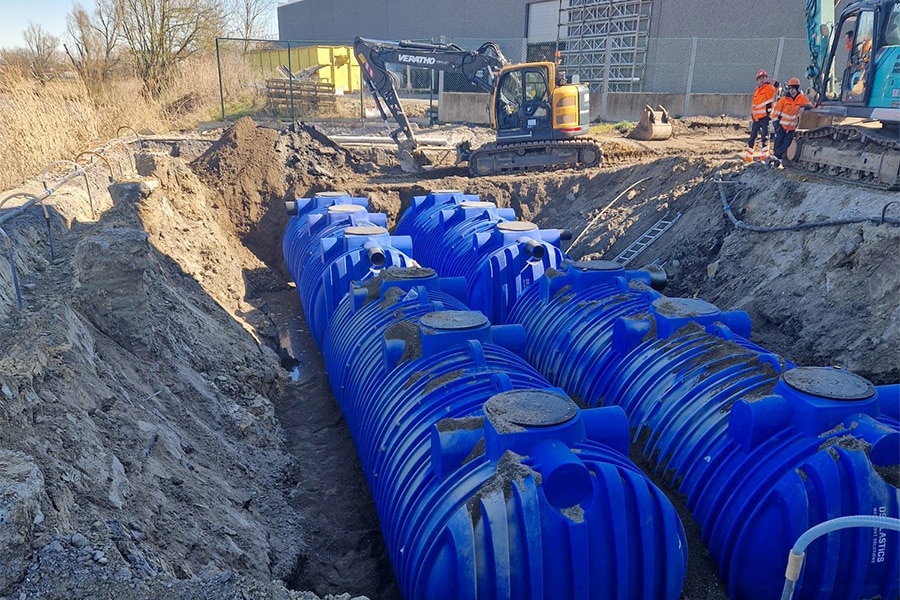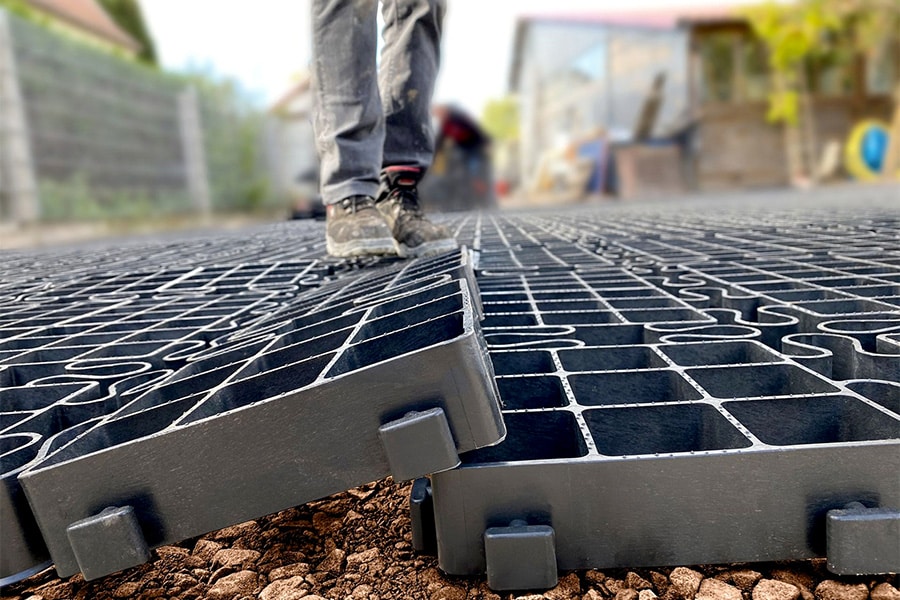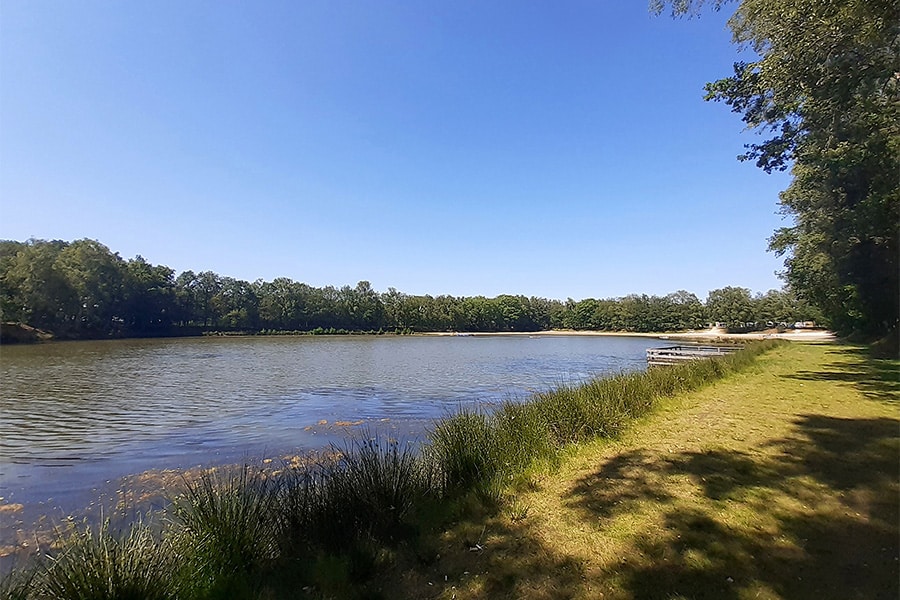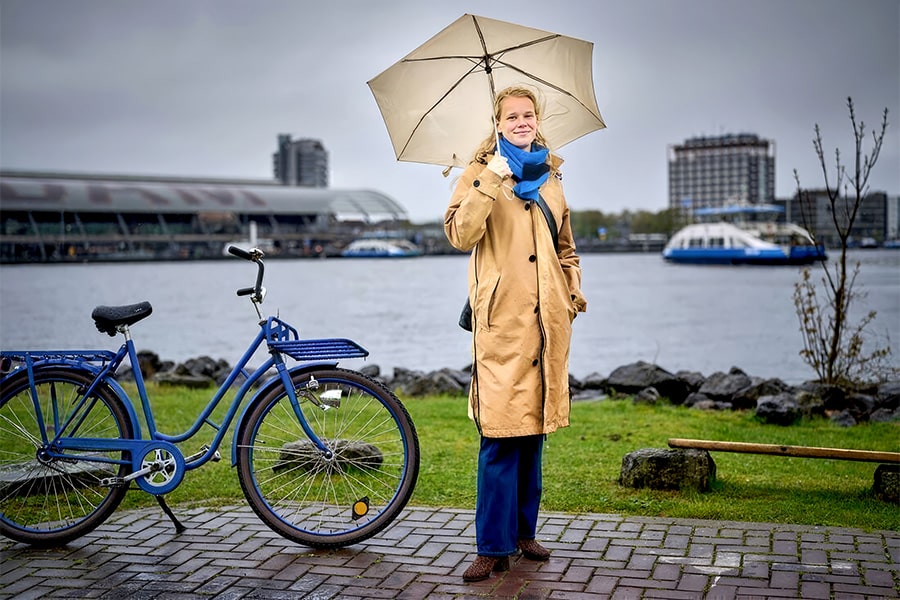
Robot removes toxic coating in Maas tunnel
Following the example of the car tunnel, the bicycle and pedestrian tunnel of the Maastunnel in Rotterdam is also undergoing extensive renovation and restoration. Because it is a national monument, extra care is required. Service Group developed a self-propelled robot to remove the toxic, PCB-containing coating on the ceiling of the tunnel with extreme precision and without human exposure.
The bicycle and pedestrian tunnel is undergoing a major overhaul. For example, the floor of the pedestrian tunnel will be replaced and the floor in the bicycle tunnel will be refurbished. In addition, the tiling will be refreshed, there will be new LED lighting and a new safety system. An important aspect prior to the renovation is the removal of the PCB-containing coating on the ceiling of the tunnels.
Custom Machine
A specialist in surface treatments, in the widest sense, Service Group developed a machine specifically for sanding ceilings. "We specialize in detailed removal of existing finishes and preparing substrates for a new application," Van Leeuwen explains. "The latter also happens a lot in the infrastructure sector, for example removing wearing courses and delivering the steel deck SA2.5 in one work step by means of Extreme Shotblasting. We have our own equipment and, where necessary, tailor-make our own machines for a project, such as the Maas Tunnel. Sanding virtually eliminates the chance of damage to the substrate. The pressure of the sanding head can be accurately adjusted, resulting in an extremely flat surface. However, a sanding machine for sanding a large area and removing a thick system (coating) on a ceiling did not yet exist."
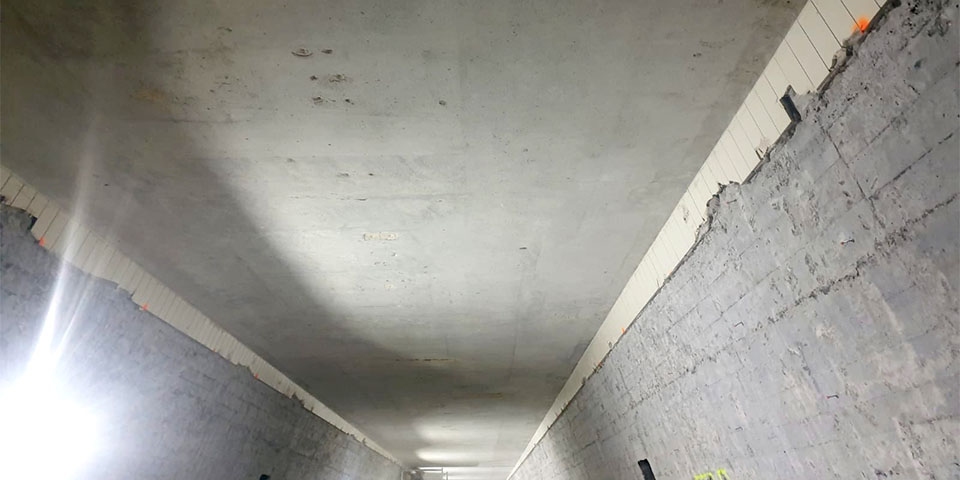
Sanding virtually eliminates the possibility of surface damage.
Closed system
Service Group developed a self-propelled robot with a sanding head that removes the toxic coating layer by layer and collects it dust-free. The challenge, according to Van Leeuwen, was in keeping the sanding head continuously pressurized while following the undulations in the ceiling. "We can't use gravity," Van Leeuwen says. "The sanding head is completely computer-controlled, moving from left to right and then working its way forward. The robot is based on a closed system. The waste stream is collected in a closed big bag via a worm gear vacuum cleaner. No one is thus exposed to dust generation. At the Maas Tunnel, 3 millimeters of the toxic coating was sanded off in one motion over a total area of about 4,000 m2."
Meanwhile, Service Group successfully removed the toxic coating in two stages, without any damage to the substrate whatsoever. "The versatile robot can be used for multiple projects, with or without any adaptation of the machine," Van Leeuwen stressed in conclusion.
